Blasts for constructive purposes
Blasts for constructive purposes
India's longest underground metro rail tunnel, 35 km long, is Delhi Metro's Yellow Line from Samaypur Badli to HUDA City Centre. Famous landmarks in Delhi such as the Delhi University, New Delhi Station, AIIMS and Qutab Minar dot this underground stretch.
Far away from Delhi, the hilly borders of India that snake along with China and Pakistan borders are not exactly the most hospitable and habitable stretches. Here, the Border Roads Organization (BRO) constructs roads and bridges
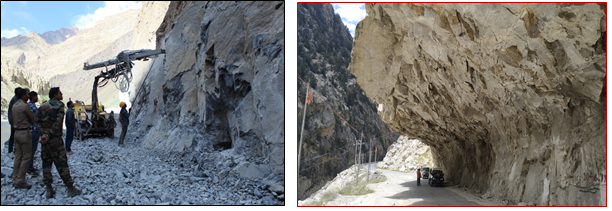
Drilling operation at BRO road construction site | BRO road construction site
Be it the heartland of Delhi or the hinterland of India's borders, constructing metro rail tunnels and border road stretches are time-bound projects. They require excavation of rocks and hills to be achieved with utmost safety of lives and property and incurring meagre costs.
Blasting with explosives is commonly done for excavations in mining, construction and so on. But urban infrastructural projects like the Delhi, Mumbai and Bengaluru Metros consider blasting a last resort due to its destructive nature. The challenge for any blast designer is to convert this destructive operation into a constructive one.
A technology that has made this possible is CSIR's Controlled Blasting Technology (CBT). CSIR's Central Institute of Mining and Fuel Research (CSIR-CIMFR) has leadership in mining research in the country. The Institute designs controlled blasting after a careful assessment of the area that needs excavation.
Significant challenges in urban blasting are to conduct blasting amid settlements and in the vicinity of sensitive structures. In a city like Delhi and Mumbai, sensitive structures can be historical buildings and monuments. It is imperative to contain the blasting side effects, such as ground vibrations, air overpressure, noise levels, and flyrock to safe limits. At the same time, it is essential to deliver the desired output of blasting and clearing of 400 to 500 cubic meter per day of excavated debris for metro projects.
Typically, to limit ground vibrations and wall damage control, pre-split blasting is adopted. This technique involved drilling closely spaced linear holes and blasting the holes to induce a fracture before the blasting of desired excavation. Even though widely used, this technique is not entirely suited where the pre-split blasting can generate ground vibrations and noise beyond the prescribed limits.
To overcome the problem, CSIR-CIMFR developed two ultra-controlled blasting techniques to contain vibrations and to enhance productivity. These are the Modified Pre-splitting Technique and Shock Relief Blasting Technique.
The Modified Pre-split Blasting involves drilling large diameter holes of 100 mm, and small diameter jackhammer holes between the large holes. This pre-split blasting is designed to generate vibrations limits of less than 10 mm/second, 40-44% lower than the normal pre-splitting.
The Shock Relief Blasting consists of placing a reinforced concrete ball at the bottom of the drilled hole. When the explosive is set-off, the shock waves travel in all directions except the bottom. This results in minimum damage to the bottom and maximum breakage to the rock mass. This is favourable in reducing the damage to the foundation and the sides and maximising the blast fragmentation. It also reduces the vibration intensity by 60% and reduces damage to the foundation by 80-85%. The Shock Relief Blasting technique of CSIR-CIMFR saves cost and time. The method can be used in constructions such as hydropower plants, metro stations, and others. It avoids foundation damage, which otherwise would require a considerable expenditure in the form of back-fill concreting if the foundation is damaged.
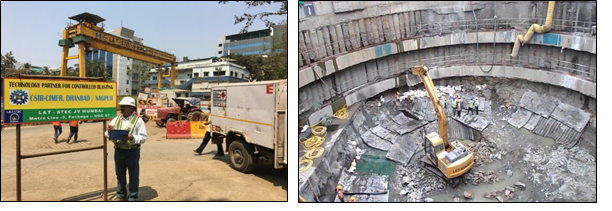
Unlike the Delhi Metro excavations, the excavations carried out by CSIR-CIMFR for the Border Roads Organisation posed a different set of challenges. Much of the work of the border roads are in the mountainous and, many a time, harsh Himalayan terrains. Landslides, snowfalls and loss of lives of the BRO workforce and equipment are among the significant challenges. The objective here also is to enhance the pace of the work without compromising on the safety of BRO people and machines.
CSIR-CIMFR conducted thorough assessments, trained BRO Officers, and after every assignment, SOP was submitted to BRO so that BRO can implement similar controlled blasting designs for their roads. CSIR-CIMFR's eco-friendly blast designs and implementation have enhanced the progress of the strategic roads by 35 to 40%.
Yet another mega-construction project where CSIR-CIMFR controlled blasting technology was used is the Navi Mumbai International Airport (NMIA).
Navi Mumbai International Airport (NMIA), an under-construction greenfield international airport, posed a few blasting challenges. There had been haphazard stone quarrying along the Ulwe hill. And adjoining the hill, in a hundred-metre range, there are eight villages with many hutments in the periphery. The project objective was to bring down the 92 meters high hill to about 8 meters. The entire challenging operation was monitored and guided by CSIR-CIMFR.
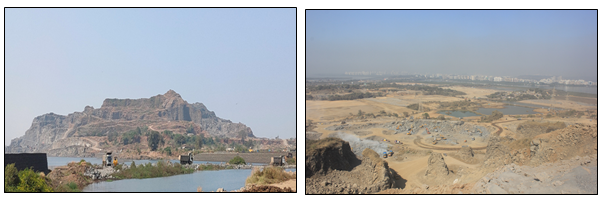
Blasting old and dilapidated bridges that make way for the construction of new bridges in Eastern Railways and blowing up hilly terrains to build roads and rail networks like in Konkan Railways, CSIR-CIMFR's blasting technologies and designs have been at the forefront.
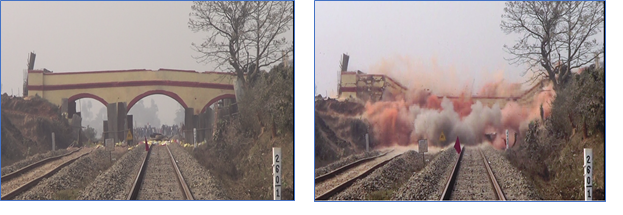
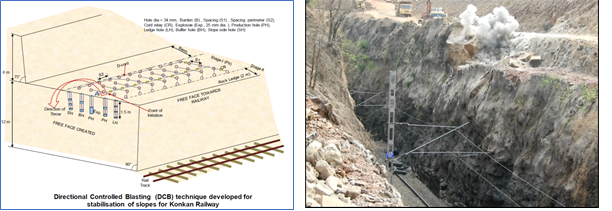
CSIR-CIMFR ensures that blasting, even if only for constructive purposes, is carried out with utmost care for lives and property, incur low costs and maximises efficiency.

 Pensioners Corner
Pensioners Corner Screen Reader Access
Screen Reader Access Skip to main content
Skip to main content

























